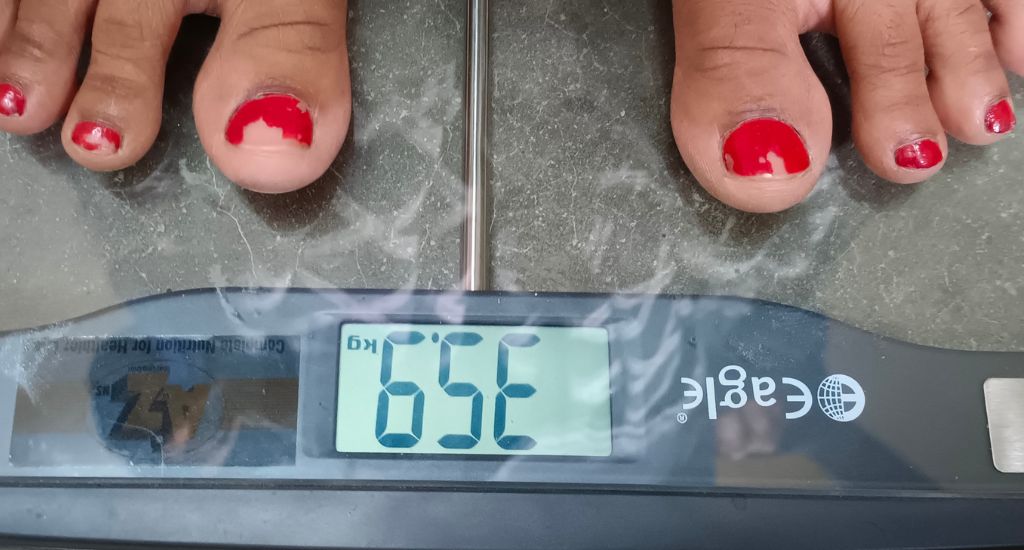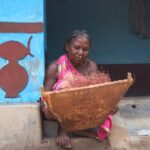The frail frame of 17-year-old Sarika Khatun belies her age, and she speaks in a low, laboured voice about her frequent headaches that sometimes feel like a hammer driving a nail through her skull. She, like many women and girls in the Sundarbans delta of West Bengal, has anaemia.
“The headaches are so intense that the world appears to spin around me. I often have to lean against a wall for support, or else I might collapse. I feel fatigued even after walking short distances, and I prefer staying indoors after classes,” said the Class 9 student, who lives in a government-run home for orphans from the Sundarbans islands of South 24 Parganas district.

Khatun applies pain balm for relief, but that hardly helps. Her classmate, 16-year-old Manisha Parveen, also suffers from similar headaches and debilitating tiredness, making it challenging for her to lead a normal life.
Both girls are anaemic, exhibiting low haemoglobin levels and body weight. Khatun’s haemoglobin level is a mere 6.5 g/dl, far below the healthy range of 12-16 g/dl for females of her age. Her body weight, at 36 kg, is significantly lower than the expected 52 kg for girls her age. Parveen’s health parameters mirror Khatun’s, with the additional burden of weighing even less than her friend.
Also Read | Women-centric interventions needed for flood-ravaged Sundarbans islands
They are not isolated cases. Anwara Molla, a 23-year-old mother of a three-year-old, is also burdened by severe headaches and the consequent reluctance to perform daily household chores.

“For the past two years, I have been experiencing excruciating headaches. Although I take medicines, they provide temporary relief and the pain returns after a few days,” said Molla of Sonakhali village.
A common disorder
Anaemia is a common blood disorder that can affect any age, ethnicity and gender. People with anaemia don’t get enough oxygen-rich blood, and as a result, they feel tired or weak and may show other symptoms, such as shortness of breath, dizziness or headaches.
A survey conducted on 164 women and adolescent girls in the Basanti and Gosaba blocks of Sundarbans revealed that a staggering 97 percent of them are anaemic, suffering from a severe deficiency of healthy red blood cells, which leaves them weak and frail.
Bhaskar Paul, the founder of Care Sunderban, a non-profit organisation working to improve healthcare services in the Sundarbans, said: “During the first week of May, we conducted a survey and discovered that nearly all women exhibited anaemia and lower body weights, rendering them susceptible to diseases.”

Eating a balanced diet high in iron, vitamin B12 and folic acid, scheduling regular check-ups and checking the family’s history with anaemia are ways to help prevent select types of the condition.
Kamrunnesa Khan Molla, 38, who operates a medicine shop in Sonakhali market, frequently encounters women complaining of severe headaches and stomach pain.
Also Read | Cooking in iron kadhais combats anemia in Jharkhand
“We receive at least 50-60 cases every month. Most of them have low body weight, appear frail, and likely suffer from anaemia. Unfortunately, they are often unaware of the disease and consider it a minor ailment. Although we advise them to undergo a pathology test, many disregard the recommendation due to poverty,” she said.
Anaemia in Sundarbans
The archipelago in India consists of 104 islands, with 54 of them inhabited, while the remaining are dense forests with restricted access due to wildlife, predominantly tigers and crocodiles. Natural calamities are frequent, and the lack of viable livelihood options compels male members of the community to migrate to other states. Consequently, women bear the responsibility of caring for their families, and poverty pervades almost every household.

Sanchita Haldar, a manager at a women’s co-operative credit society in the Basanti block, said the findings are distressing, but not surprising.
“In the absence of men, women shoulder the responsibility of running their families. They neglect their own health and eat frugal meals of rice and lentils. Locally available leafy greens provided additional nutrition, but now everything is contaminated with chemical fertilisers, posing health risks. Poverty makes it difficult to afford fruits regularly, and for many families, it is considered a luxury. As a result, women become anaemic,” Haldar said.
Also Read | Treatment and awareness help women overcome anemia
Ranjit Kumar Gupta, a Kolkata-based doctor who visits remote areas of Sundarbans, acknowledges that the geographical location exacerbates the prevalence of anaemia in the region.

“The islands are in remote areas and lack sufficient infrastructure to accommodate doctors from Kolkata. Villagers are too impoverished to travel to the city and afford fees charged by doctors. Consequently, they fall prey to quacks. Anaemic women give birth to malnourished children and face life-threatening situations during delivery. The need of the hour is to improve healthcare services in Sundarbans,” he said.
A senior health official, speaking anonymously, stated that the government has been making efforts to provide healthcare services in all remote areas of the state.
Also Read | Land shaping benefits Sundarban farmers
The lead image at the top shows 17-year-old Sarika Khatun weighing herself. (Photo by Gurvinder Singh)
Gurvinder Singh is a journalist based in Kolkata.








